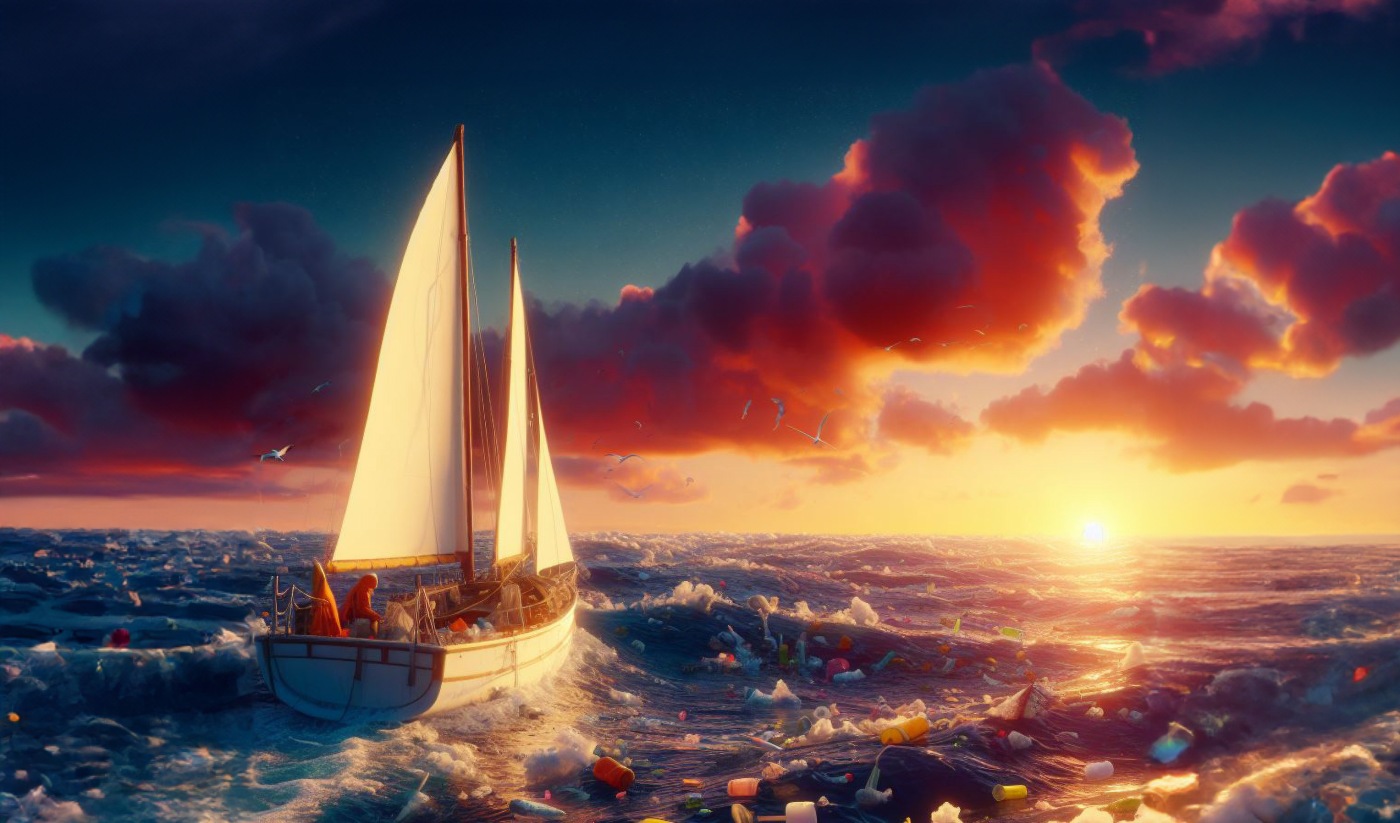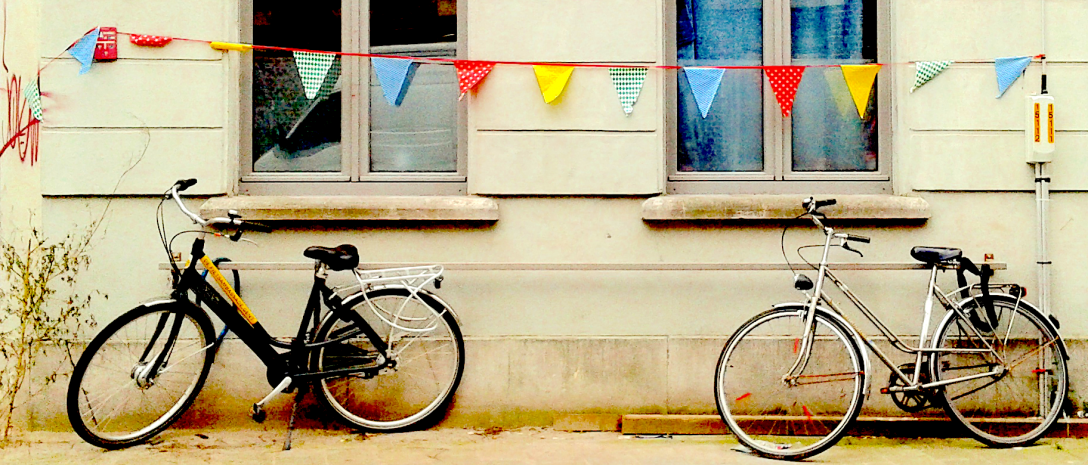SeaPaCS (Participatory Citizen Science Against Marine Pollution – https://crowdusg.net/seapacs/), a 6-month citizen science project in the city of Anzio (supported by the European funds of the IMPETUS4CS project, WIDERA 2021-ERA-01, Grant Agreement No. 101058677), is coordinated by Chiara Certomà (DIGGEO@ESOMAS laboratory, University of Turin) and co-coordinated by Federico Fornaro (Lega NavaleItaliana Anzio) and Luisa Galgani (Division of Biological Oceanography of the GEOMAR Helmholtz Centre for Ocean Research in Kiel, Germany, and University of Siena, DBCF).
The project focused on raising awareness about the consequences of marine plastic pollution on local biodiversity and triggering transformative local action for sustainability-oriented behaviors in the coastal city of Anzio. During its course, SeaPaCS involved different citizen groups, from fishermen to divers, from students to researchers and teachers, and communication professionals in a participatory process that combines social and biological disciplines to plan and co-create knowledge about the marine ecosystem through collaborative activities of scientific analysis and visual documentation of emerging natural ecosystems on plastic marine debris in the sea. Plastic debris in the marine environment fragments into floating plastic particles that enter the food chain at all levels, and provide a durable substrate that is colonized by microorganisms, which include potential pathogens and harmful species of algal bloom, and transported over long distances. The ambition of the project is to generate a body of knowledge that contributes significantly to the governance of ocean sustainability.
The diary of the project activities carried out is available at: https://crowdusg.net/seapacs/
The project will end with a final “Scientific Aperitif” on November 25, 2023 from 5:30 pm at the headquarters of the Anzio section of the Italian Naval League.

During the Aperitif, open to all citizens and, in particular, to the volunteer citizens of the project, the activities carried out in recent months with the collaboration of citizens, such as “Fishing plastic” on board a fishing boat, the PreciousPlastic educational laboratory, and the microplastic sampling trips on board a sailboat for subsequent chemical and biological analysis on it, will be presented. During the course of the project, interviews with local fishermen were also carried out and the results of the social analyses will also be presented, together with those of the scientific analyses.
On this occasion, the project team will also present the activities in the area related to the efficiency of plastic collection at sea by fishermen, thanks to the supply of reusable fish boxes instead of the polystyrene ones (produced by DUWO – https://duwo.it).
The evening will be introduced by the screening of the final video shot during the SeaPaCS activities, thanks to the collaboration of the videomakers Federico Fornaro and Giuseppe Lupinacci of Raw-News media agency, entitled “SeaPaCS_The Video. Participatory Citizen Science Against Marine Pollution”. Through the language of documentaries, scientific research is told, but also the commitment of the population to monitor and improve the health of the sea and with it of global ecosystems.
The video was anticipated a month ago by the launch of the teaser trailer “Something is happening” (https://crowdusg.net/2023/10/16/seapacs-teaser/).
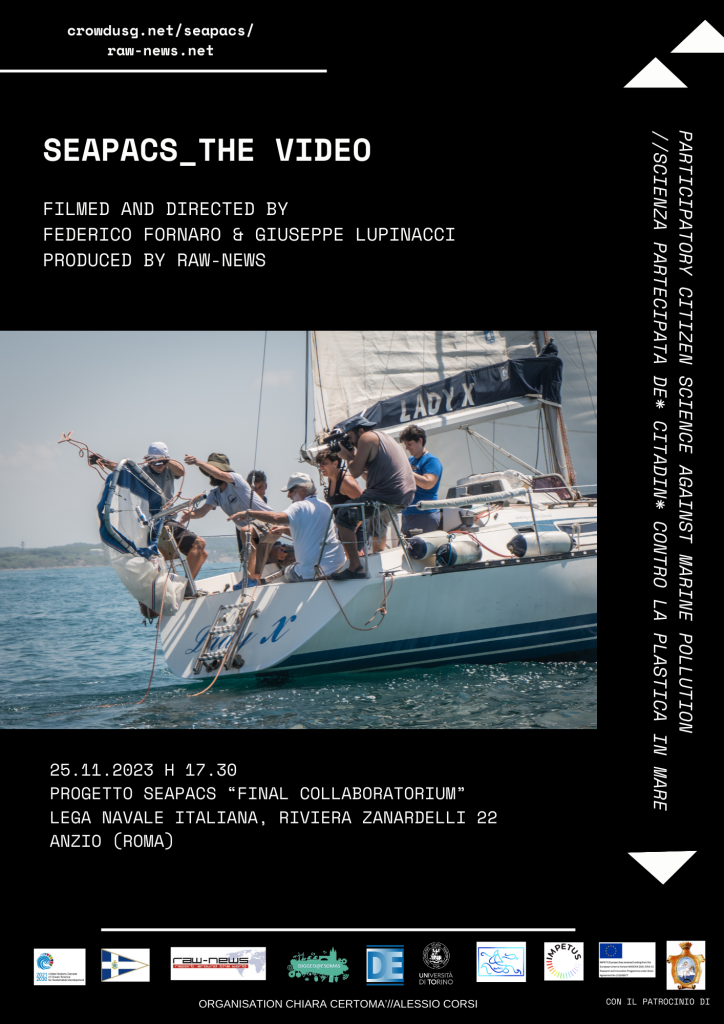
On the occasion of the event, the LNI will host the photographic exhibition of the underwater photographer Giuseppe Lupinacci, entitled “Oceanic Assemblages. Underwater culture-nature entaglements”, also thanks to the support of Federico Fornaro and Davide Rinaldi of the “Capo d’Anzio Diving Center”. At the end of the journey begun with the two previous exhibitions, “Explorations in the Plastisphere. New Hybrid Ecologies of the Mediterranean Sea” (https://crowdusg.net/2023/05/23/photo-exhibition-on-new-hybrid-ecologies-of-the-mediterranean-sea/) and the photographic exhibition “Anzio under the Sea. Resistant ecologies of the Mediterranean Sea” (https://crowdusg.net/2023/06/19/resistant-ecologies-of-the-mediterranean-sea_seapacs/).
The exhibition documents and denounces the huge presence and danger of plastic in the oceans, which is now an integral part of marine ecosystems.
The exhibition documents and denounces through artistic shots how the plastic that over the years has reached the sea has fragmented into smaller and smaller pieces (microplastics) that are impossible to clean up while macroplastics (visible debris) are now incorporated into the marine ecosystem (as in the photo), in what Cristina Romero Castillo has called the “AnthropOcean” (the sea in which we human beings are leaving our footprint). The Mediterranean Sea, portrayed, hosts unique habitats due to its peculiar biological, chemical and hydrogeological characteristics but is also strongly threatened by pollution because it is a semi-closed basin surrounded by plastic sources (rivers, beaches and maritime traffic).
The new ecosystems (which also includes larger organisms, from crabs to jellyfish, that cross the oceans ingesting plastic) are complex hybrids of nature and remnants of anthropogenic society.
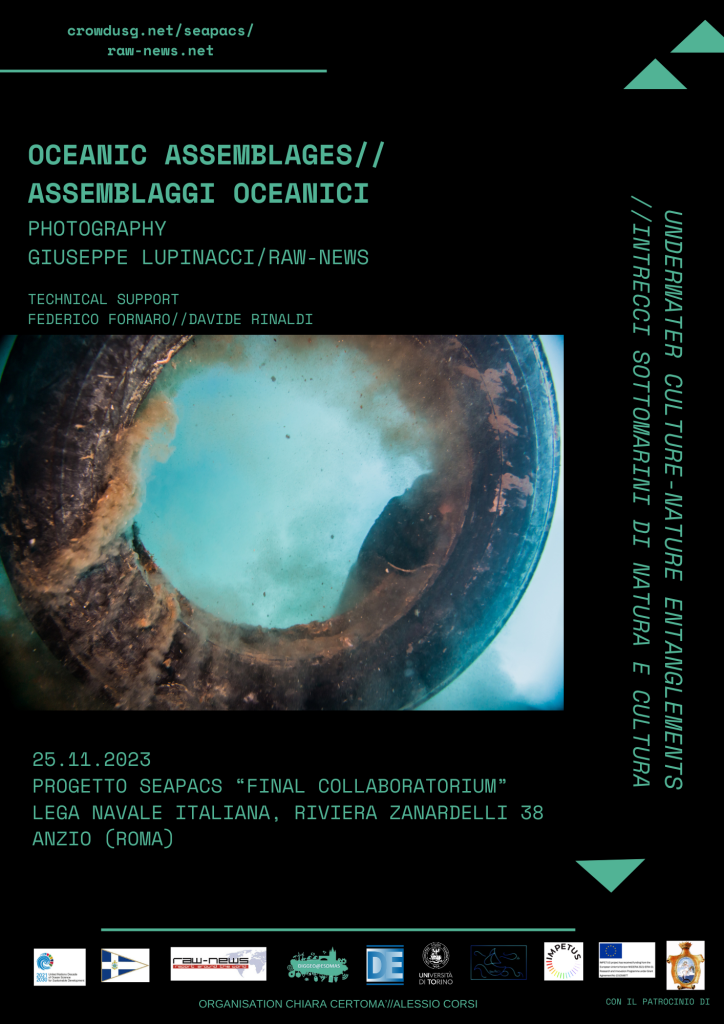
In addition to the photographic exhibition, there will be a corner with Alter Equo by Laura Buffa – ethical jewels – productions (https://www.instagram.com/alterequo/?fbclid=IwAR2h–dBnoIgVxS2lc9JbYUSiPwCDdr4rf28HecS1CQMzWoLknCBCIvt0gA):

[art work and photo by Laura Buffa]
That’s an evening that talks about the sea with the intervention of a special guest: the ocean sailor and award-winning Matteo Miceli (http://www.matteomiceli.com), recordman of solo crossings and sustainable navigation through the complete energy self-sufficiency (with solar panels, wind generators and hydroturbines capable of powering all the services on board) of Eco40 designed by him for the round-the-world trip from Rome to Rome in 2014, just returned from an Atlantic crossing, will tell us about his latest adventures.
But a project that comes to an end does not mean the end of the fight against all forms of pollution! During the evening, thanks to the collaboration of the Rotary Club Costa Neroniana (with the intervention of the president Tiziana Dell’Unto), the Italian Naval League of Anzio, the University of Turin and the University of Siena, the follow-up project of SeaPaCS, called “L.A.D.I. & The Sea”, will be presented: the project will have the participation of the students of the LNI sailing school in the sampling of microplastics using a special self-built sampling network during SeaPaCS, called L.A.D.I. (Low-tech Aquatic Debris Instrument). During the SeaPaCS project, in fact, a protocol for sampling plastic was defined through the use of self-built instruments available in open access on https://zenodo.org/records/10051361.
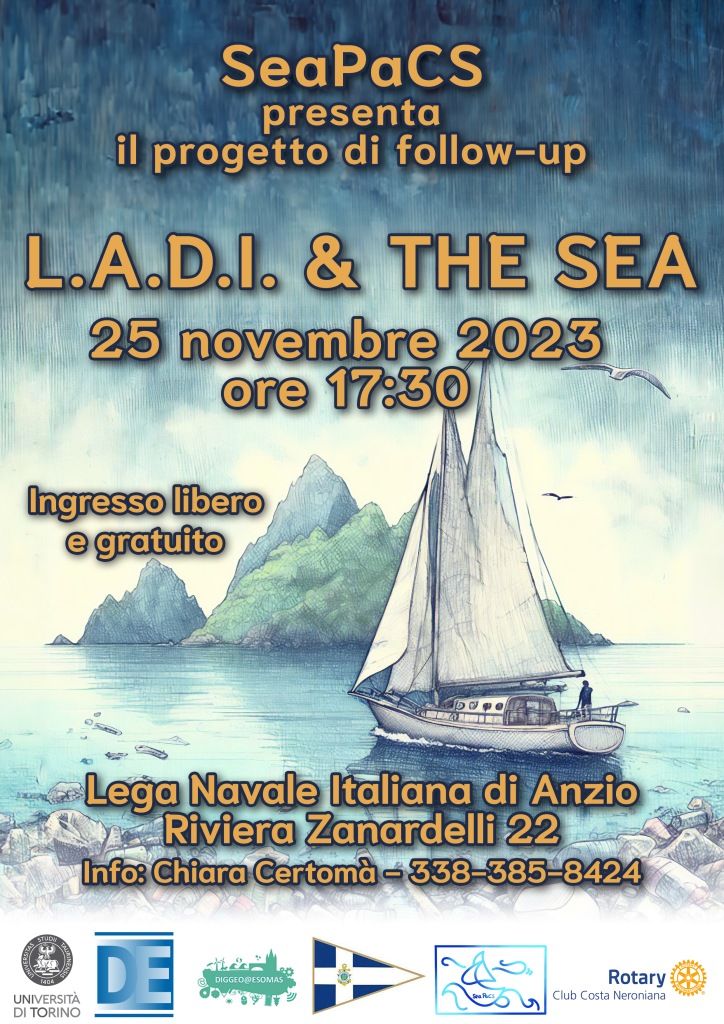
Concluding the project: activities of November 25, 2023 final event


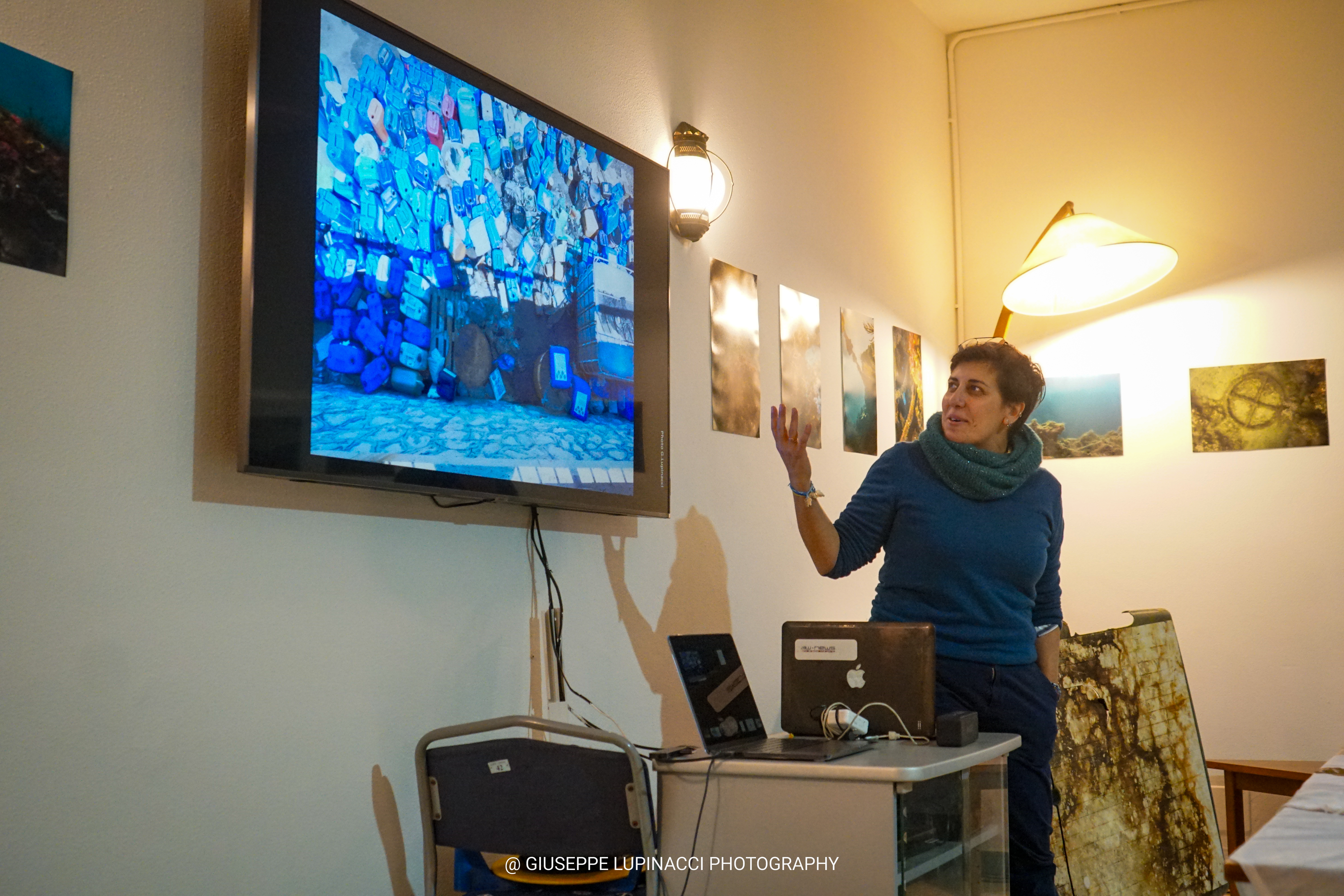


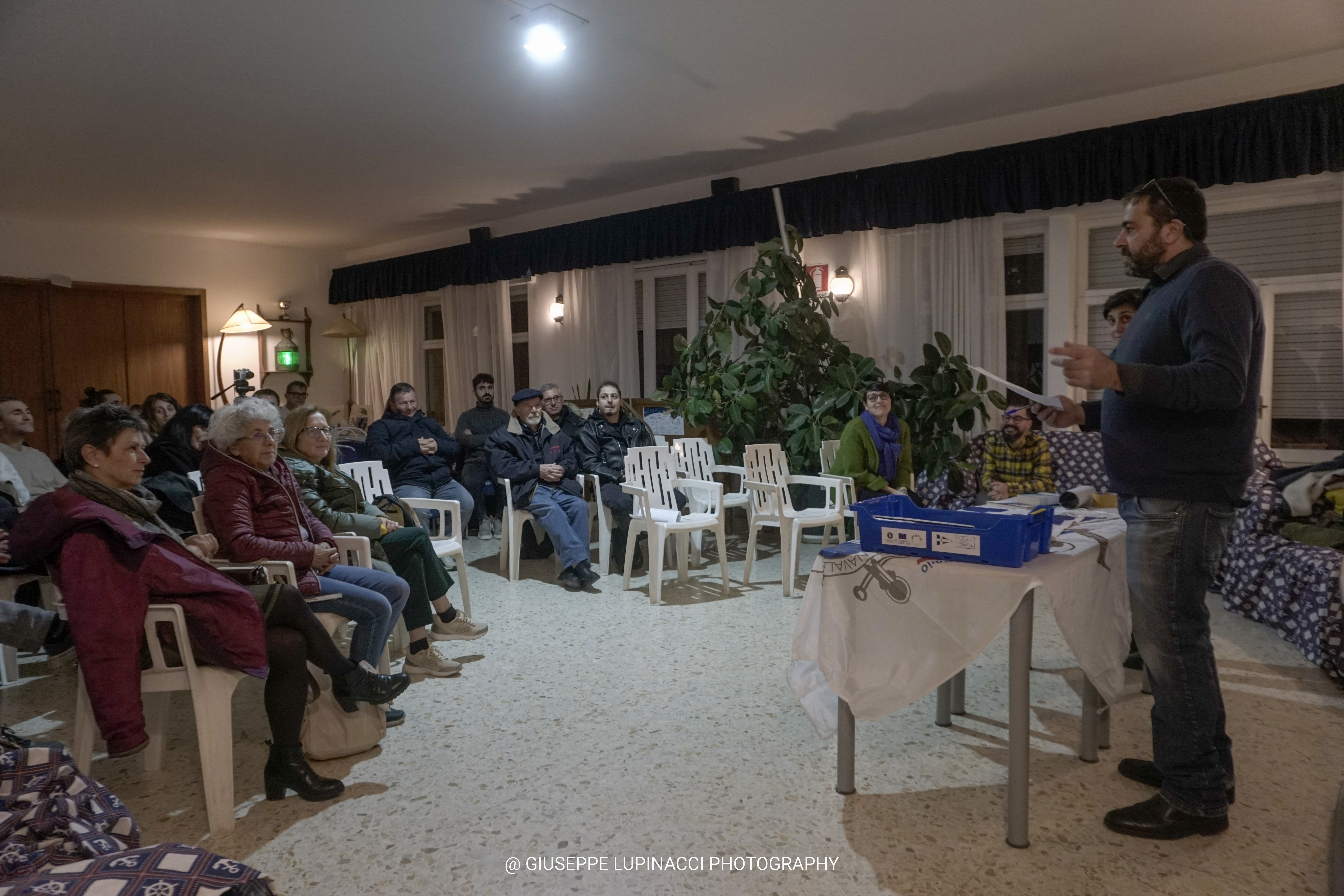


[photo G.Lupinacci]
On November 25th, 2023, the final event of the European Project SeaPaCS (Participatory Citizen Science against Marine Plastic) was held at the Anzio headquarters of the Italian Naval League (LNI – Lega Navale Italiana).
About 35 citizens have participated, represented mainly the associations that collaborated with SeaPaCS during its activities.
The event has been introduced by Federico Fornaro, representing the LNI and Raw-News media agency (which is a partner of the project), then Dr. Chiara Certomà (University of Turin), coordinator of the project, showed the audience the activities carried out during these last six months of work:
- the photographic exhibitions by Giuseppe Lupinacci “Anzio under the Sea” and “Explorations in the plastisphere”;
- the participation to national and international conferences;
- the short video shot by Federico Fornaro and Giuseppe Lupinacci “Searching for Plastic”;
- the first scientific aperitif and “collaboratorium”;
- the reportage “Fishing for Plastic” aboard the trawler “Paola Madre”;
- the interviews to the fishermen about the problem of marine pollution;
- the conceptual map written after the analyses of the interviews;
- the microplastics sampling at the harbor and off the coasts of Anzio on board of the sailing boat “Lady X”;
- the work done about the sensibilization about the problem of plastic and trash on the docks of the port of Anzio;
- the drafting of some policy suggestions about an “Eco-center” on the docks;
- the presentation to the audience of the new fish boxes that will be delivered to the fishing boats of Anzio;
- the fablab “Precious Plastic” with the children of the schools of Anzio;
- the collaboration with YouTuber Saverio Lalli;
- the short video shot by Federico Fornaro and Giuseppe Lupinacci “Something’s happening”;
- the articles and blogs written during the project;
- the photographic exhibition by Giuseppe Lupinacci “Oceanic Assemblages”.
The results of interviews and consultations with seafaring workers, in particular trawlers and “small-scale fisheries”, were reported as key witnesses to the problem of plastic pollution and the possible recovery and disposal of plastic encountered at sea. The results were integrated into a summary concept map:

The main topics of discussion were identified which include: change over time, quantity, types of waste, origin, actions and related effects. Fishermen have reported that, while the presence of plastic in the sea has increased in recent decades (greater visibility in coastal waters) in the seabed where bottom trawling is practiced, the amount is lower. Many of the objects found in the water seem to derive from fishing activities (ghost nets, octopus traps, cables…) or could reach the sea via rivers and inland waterways. During the field research activities with them, the presence of macroplastics in the sea in coastal waters up to 10 miles, in the area extending from the port of Anzio to the port of Nettuno, was detected. Fishermen reported that, although during the summer, due to the calm sea conditions (as well as the scarce contribution of the rivers due to the lack of rain) plastic and anthropogenic waste tend to accumulate on the bottom and therefore constitute about 15-20% of the catch at each tow, during the winter period and with rough seas, these can make up as much as 50% of the catch, bringing back to land about a large black bag for waste per day.
Fragmented plastic from bottles, containers and packaging is mainly recovered.
In addition, fishermen have reported that abandoned or lost fishing gear can cause serious navigational problems as these become entangled with the propeller, while plastic films could clog the engine’s cooling system causing it to overheat. This damage can cost fishermen thousands of euros, so plastic, they note, causes not only environmental damage, but also economic damage.
In terms of related actions, fishermen reported on the numerous attempts, in recent years, to create an efficient system for the collection of plastic and waste in general in the port of Anzio, but they also reported that all these attempts have failed. They therefore hoped and confirmed their willingness to collaborate in the creation of a collective area for waste disposal in the port, with a dedicated space for each vessel for the disposal of bulky or hazardous waste.In general, fishermen said they were happy to recover plastic and marine litter to help keep our seas clean, but they also highlighted the need to create a system of separate waste collection at the port with controls and limits on access, as well as with the establishment of a dedicated supply chain for the recycling and proper disposal of waste caught at sea, as well as the creation of a system of incentives would increase the participation of fishermen and marinas in the collection of waste at sea.
Then, the new and final video of the project, “SeaPaCS – the video” (shot and directed by Giuseppe Lupinacci and Federico Fornaro) has been screened for the first time.
Dr. Chiara Certomà, also, introduced the follow-up projects of SeaPaCS, showing the audience the photographic catalogue “Making Science Public”, the book “Blue Kinship. An exploration of society & the ocean relationship” which is being written right now, and the initiative “L.A.D.I. & the sea”, sponsored by the Rotary Club Costa Neroniana.
A copy of the presentation of Dr. Certomà is available here:
Then, Dr. Luisa Galgani (GEOMAR Kiel and University of Siena) showed the audience the first results of the analysis of bacteria on the plastic samples collected in the harbor and off the coasts of Anzio as well as the composition (in terms of plastic polymer types) of the fragments found during the two days of participatory monitoring with citizens in July 2023. The copy of her presentation given is available here:
Briefly, over the total number of plastic fragments collected, the majority of plastic polymers found floating on the surface in the samplings of July, both in the harbor of Anzio and along the coast, was composed of polyethylene (62%), polypropylene (27%), polystyrene (6%) and other types of plastic (rubber, for example) in a minority. This well aligns with the use of these major polymer types in packaging (around 40% of total European plastic production) and retrieval in the environment. It should also be noted that other polymers, denser than seawater and therefore sinking, were not observed because the sampling approach was focused on the floating particles and not on the “hidden” debris within the water column which may represent another great portion of all plastic at sea. Interestingly, polystyrene was present only in the harbor samples, and all the fragments found were specifically expanded polystyrene (Styrofoam), linking it most likely to fishing activities. In terms of microbial organisms on the plastic debris found, the samples at the harbor were colonized by classes of microorganisms found in human guts, and therefore, proceeding from wastewaters, while their presence in fragments sampled along the coast was limited. What was evident from the analysis is that the harbor is certainly a very different environment with respect to the coast, selecting for specific microbial communities due to different ambient physical and chemical conditions.
A video registrati in of the event has been realised by our collaboratore Saverio Lalli youtuber of Terra nel Cuore:
During the event, Laura Buffa of AlterEquo was present with her creations made from plastic found on the beaches.At the end of the presentations, the Italian Naval League offered an aperitif.

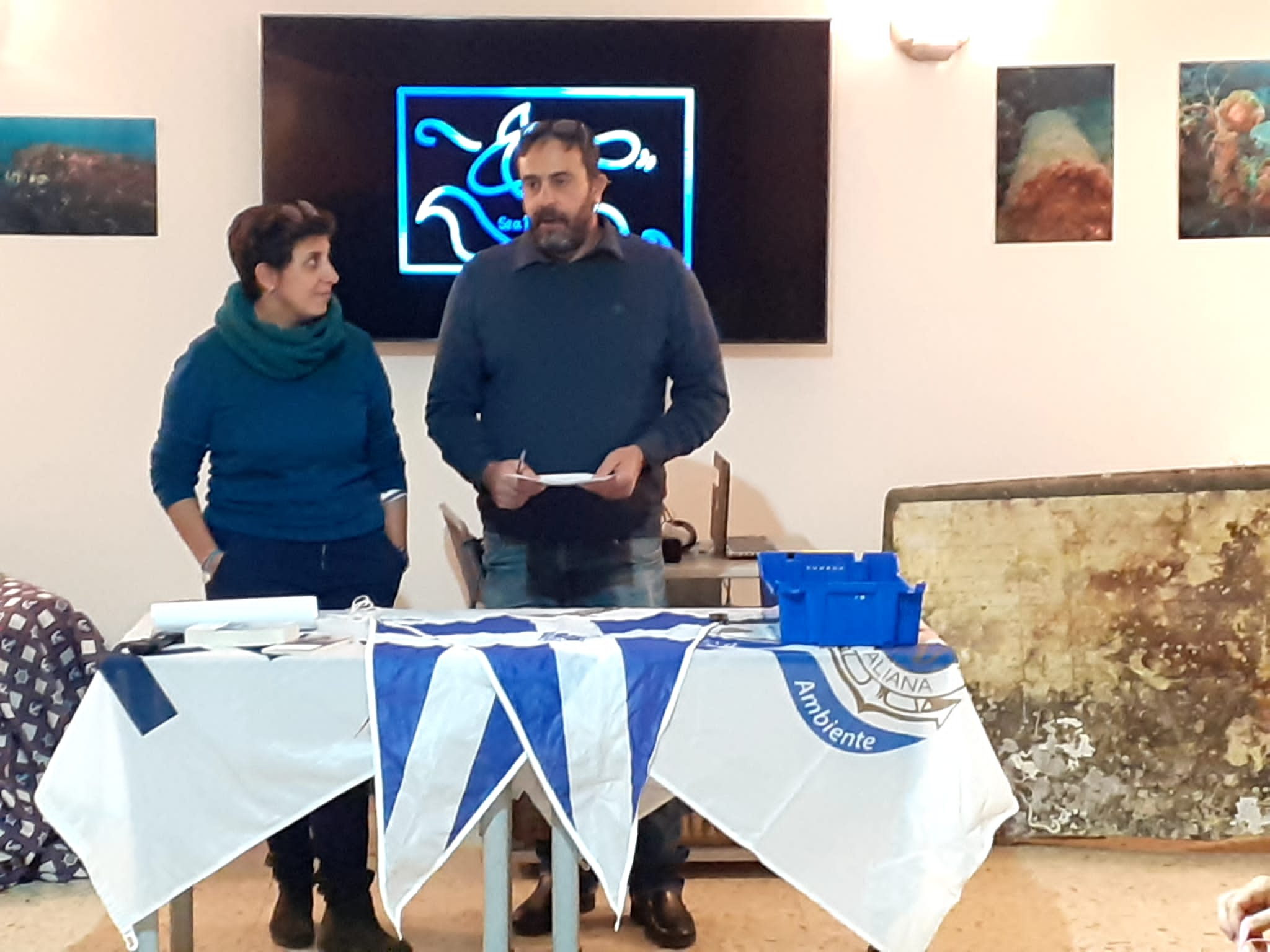
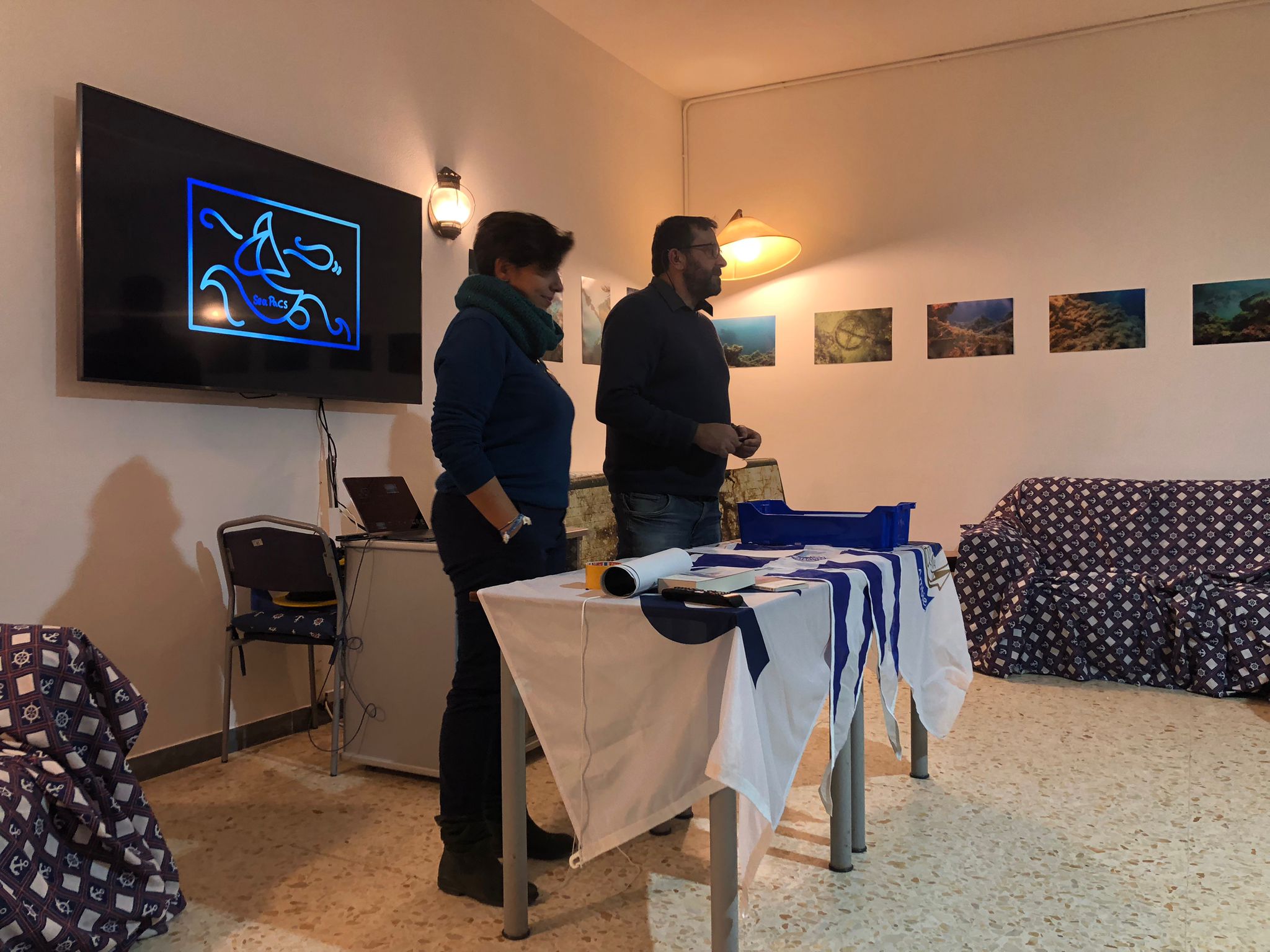

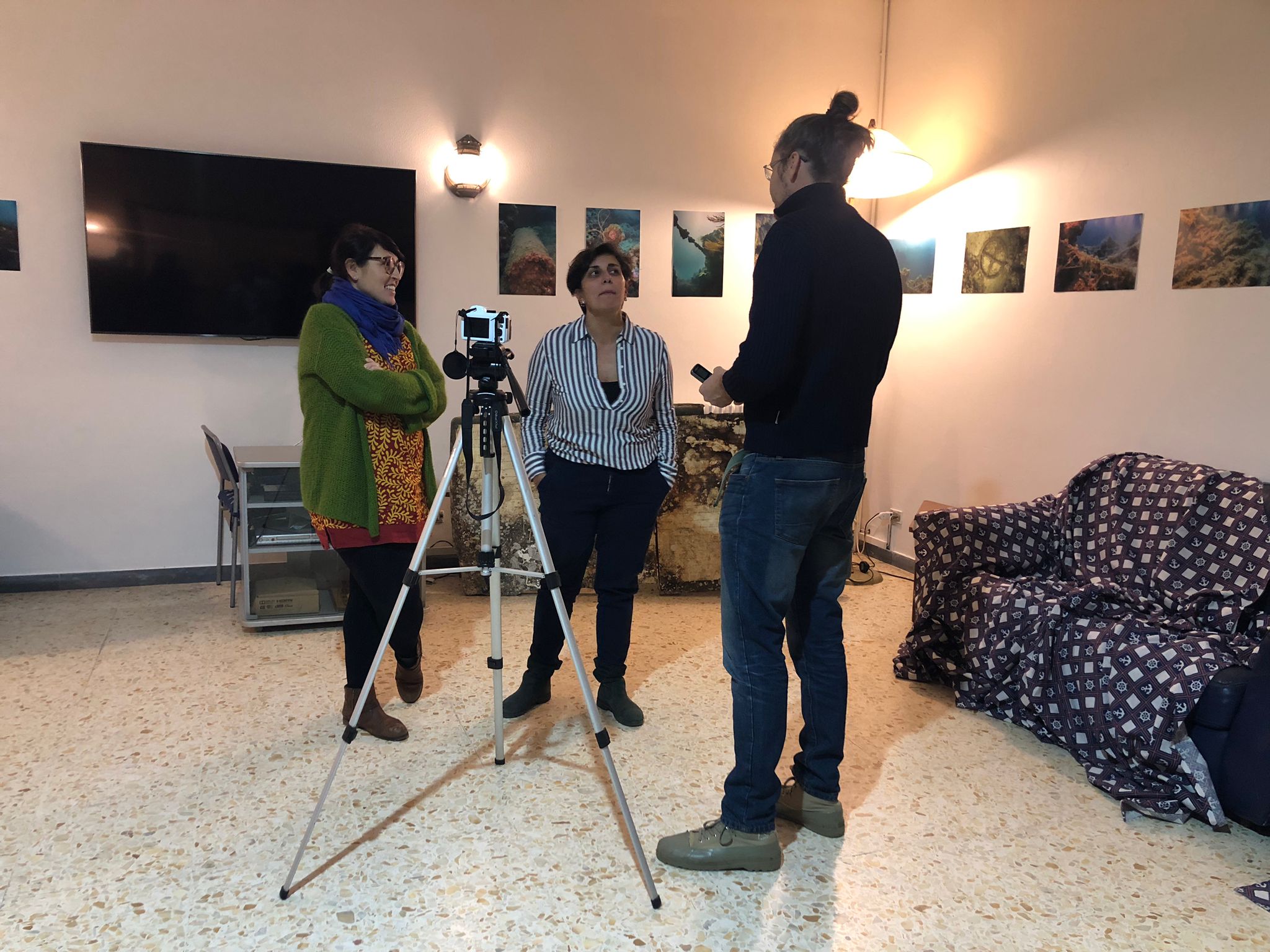

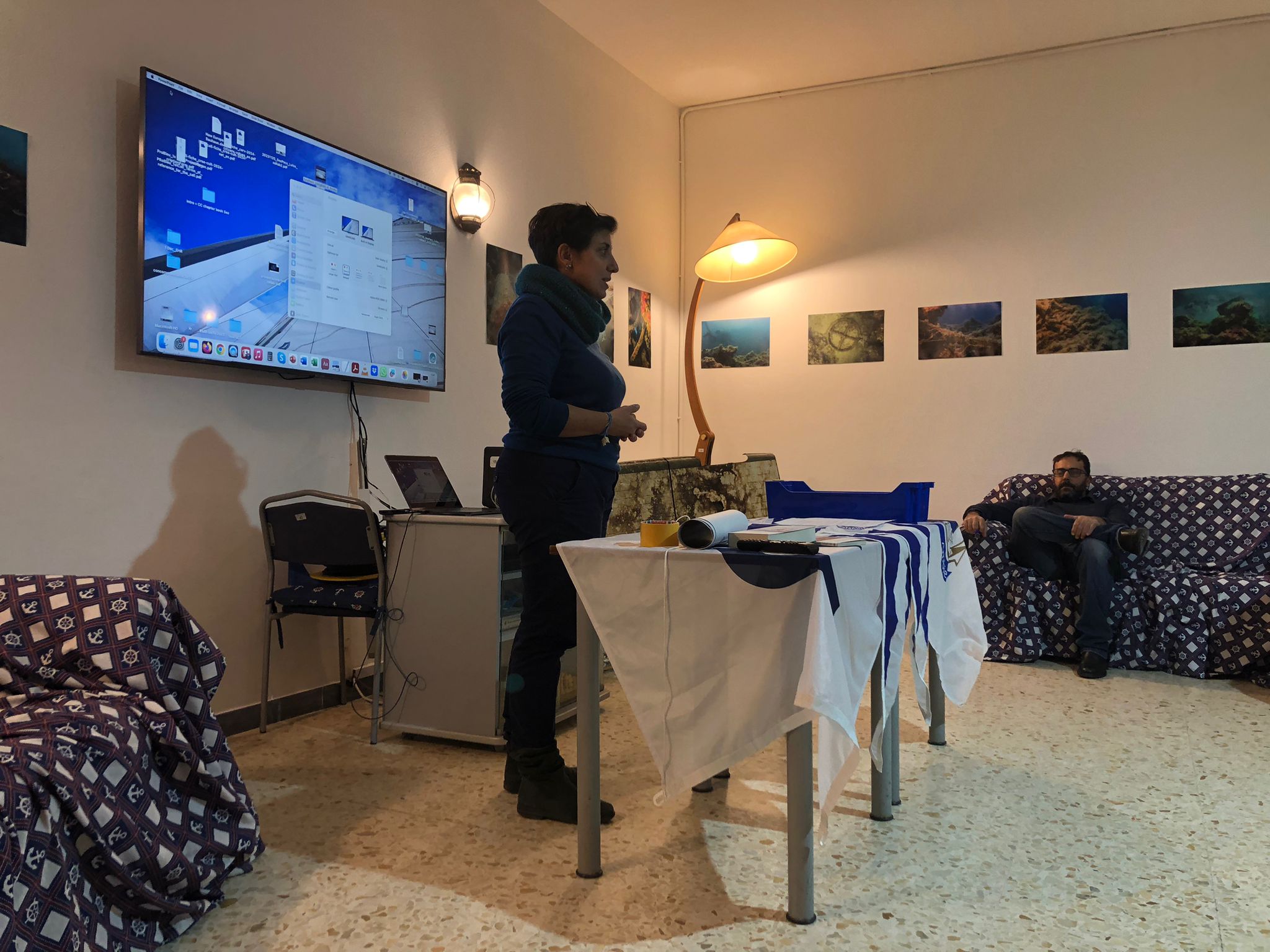

SeaPaCS (Cittadin*-Scienziat* contro la Plastica in Mare – https://crowdusg.net/seapacs/), un progetto di citizen science della durata di 6 mesi nella città di Anzio (sostenuto dai fondi europei del progetto IMPETUS4CS, WIDERA 2021-ERA-01, Grant Agreement No. 101058677), è coordinato da Chiara Certomà (laboratorio DIGGEO@ESOMAS, Università di Torino) e co-coordinato da Federico Fornaro (Lega Navale Italiana Anzio) e Luisa Galgani (Divisione di Oceanografia Biologica del GEOMAR Helmholtz Centre for Ocean Research di Kiel, Germania, e Università degli Studi di Siena, DBCF).
Il progetto focalizzato sull’obiettivo di aumentare la consapevolezza sulle conseguenze dell’inquinamento marino da plastica sulla biodiversità locale e di innescare un’azione locale trasformativa per comportamenti orientati alla sostenibilità nella città costiera di Anzio. Durante il suo svolgimento SeaPaCS ha coinvolto una varietà di gruppi di cittadini, dai pescatori ai subacquei, dagli studenti ai ricercatori e insegnanti e a professionisti della comunicazione in un processo partecipativo che combina discipline sociali e biologiche per pianificare, co-creare conoscenza sull’ecosistema marino attraverso attività collaborative di analisi scientifica e documentazione visiva degli ecosistemi naturali emergenti sui detriti marini di plastica in mare. I detriti di plastica nell’ambiente marino si frammentano in particelle di plastica galleggiante che entrano a tutti i livelli nella catena trofica, e forniscono un substrato durevole che viene colonizzato da microrganismi, che includono potenziali agenti patogeni e specie dannose di proliferazione algale, e trasportato per lunghe distanze. L’ambizione del progetto è quella di generare un insieme di conoscenze che contribuiscano in modo significativo alla governance della sostenibilità degli oceani.
Il diario delle attività di progetto realizzate è disponibile alla pagina: https://crowdusg.net/seapacs/
Il progetto si concluderà con un “Aperitivo Scientifico” finale il 25 novembre 2023 dalle ore 17:30 presso la sede della sezione di Anzio della Lega Navale Italiana.
Durante l’Aperitivo aperto a tutta la cittadinanza e, in particolar modo, ai cittadini volontari del progetto, saranno illustrate le attività portate avanti negli ultimi mesi con la collaborazione della cittadinanza come “Pescando plastica” a bordo di un peschereccio, il laboratorio didattico PreciousPlastic, e le uscite di campionamento della microplastica a bordo di una barca a vela per la successiva analisi chimiche e biologiche su di essa. Nel corso del progetto sono state, inoltre, realizzate interviste con i pescatori locali e i risultati delle analisi sociali verranno presentati anch’essi, insieme a quelli delle analisi scientifiche.
In tale occasione il team di progetto presenterà anche le attività sul territorio legate all’efficientamento della raccolta della plastica in mare da parte dei pescatori, grazie alla fornitura di cassette da pesce riutilizzabili in luogo delle cassette in polistirolo (prodotte dalla DUWO – https://duwo.it).
Introdurrà la serata la proiezione del video finale girato durante le attività di SeaPaCS, grazie alla collaborazione dei videomaker Federico Fornaro e Giuseppe Lupinacci dell’agenzia Raw-News, dal titolo “SeaPaCS_The Video. Participatory Citizen Science Against Marine Pollution”. Attraverso il linguaggio documentaristico viene raccontata la ricerca scientifica ma anche l’impegno della popolazione per monitorare e migliorare la salute del mare e con esso degli ecosistemi globali.
Il video è stato anticipato un mese fa dal lancio del teaser trailer “Qualcosa sta accadendo” (https://crowdusg.net/2023/10/16/seapacs-teaser/).
Negli spazi della sede di Anzio della LNI sarà ospitata, in occasione dell’evento, la mostra fotografica del fotografo subacqueo Giuseppe Lupinacci, dal titolo “Assemblaggi Oceanici. Intrecci sottomarini di natura e cultura” , realizzata anche grazie al supporto di Federico Fornaro e di Davide Rinaldi del “Capo d’Anzio Diving Center”. A conclusione del percorso iniziato con le due mostre precedenti, “Esplorazioni nella Plastisfera. Nuove Ecologie Ibride del Mediterraneo” (https://crowdusg.net/2023/05/23/photo-exhibition-on-new-hybrid-ecologies-of-the-mediterranean-sea/) e la mostra fotografica “Anzio in fondo al mare. Ecologie resistenti del Mediterraneo” (https://crowdusg.net/2023/06/19/resistant-ecologies-of-the-mediterranean-sea_seapacs/).
La mostra documenta e denuncia l’ingente presenza e la pericolosità della plastica presente negli Oceani che è ormai parte integrante degli ecosistemi marini.
La mostra documenta e denuncia attraverso scatti artistici come, in quello che Cristina Romero Castillo ha definito l“AntropOceano” (il mare in cui noi esseri umani stiamo lasciando la nostra impronta), la plastica che nel corso degli anni ha raggiunto il mare si è frammentata in pezzi sempre più piccoli (microplastiche) che sono impossibili da ripulire mentre le macroplastiche (detriti visibili) sono ormai inglobati dall’ecosistema marino (come nella foto). Il Mar Mediterraneo, ritratto, ospita habitat unici per le sue peculiari caratteristiche biologiche, chimiche e idrogeologiche ma è anche fortemente minacciato dall’inquinamento perché è un bacino semichiuso circondato da sorgenti di plastica (fiumi, spiagge e traffico marittimo).
I nuovi ecosistemi (che comprende anche organismi più grandi, dai granchi alle meduse, che attraversano gli oceani ingerendo plastica) sono ibridi complessi di natura e resti della società antropica.
Oltre alla mostra fotografica, ci sarà un angolo con le produzioni di Alter Equo – ethical jewels – di Laura Buffa (https://www.instagram.com/alterequo/?fbclid=IwAR2h–dBnoIgVxS2lc9JbYUSiPwCDdr4rf28HecS1CQMzWoLknCBCIvt0gA).
Una serata che parla di mare questa che vedrà, poi, l’intervento di un ospite d’eccezione: il velista oceanico e pluripremiato Matteo Miceli (http://www.matteomiceli.com), recordman di traversate in solitaria e di navigazione sostenibile attraverso la completa autosufficienza energetica (con pannelli solari, generatori eolici ed idroturbine in grado di alimentare tutti i servizi di bordo) di Eco40 da lui progettato per il giro del mondo da Roma a Roma nel 2014, appena rientrato da una traversata atlantica, ci racconterà le sue ultime avventure.
Ma un progetto che giunge a conclusione non significa la fine della lotta contro ogni forma di inquinamento! Durante la serata sarà presentato, grazie alla collaborazione del Rotary Club Costa Neroniana (con l’intervento della presidente Tiziana Dell’Unto), della Lega Navale Italiana di Anzio dell’Università di Torino e dell’Università di Siena, il progetto follow-up di SeaPaCS, chiamato “L.A.D.I. & The Sea”, che vedrà la partecipazione dei ragazzi della scuola vela della LNI nel campionamento delle microplastiche utilizzando una speciale rete di campionamento autocostruita durante SeaPaCS, denominata appunto L.A.D.I. (Low-tech Aquatic Debris Instrument). Durante il progetto SeaPaCS si è, infatti, definito un protocollo di campionamento della plastica attraverso l’uso degli strumenti autocostruiti disponibile in open access su https://zenodo.org/records/10051361.
Conclusione del progetto: le attività dell’evento del 25 Novembre 2023
Il 25 novembre 2023, presso la sede di Anzio della Lega Navale Italiana (LNI), si è tenuto l’evento finale del Progetto Europeo SeaPaCS (Cittadin*-Scienziat* contro la Plastica in Mare).
Hanno partecipato circa 35 cittadini, in rappresentanza principalmente delle associazioni che hanno collaborato con SeaPaCS durante le sue attività.
L’evento è stato introdotto da Federico Fornaro, in rappresentanza della Lega Navale Italiana di Anzio e dell’agenzia di stampa Raw-News (partner del progetto), poi la Dott.ssa Chiara Certomà (Università di Torino), coordinatrice del progetto, ha illustrato alla platea le attività svolte in questi ultimi sei mesi di lavoro:
- le mostre fotografiche di Giuseppe Lupinacci “Anzio in fondo al mare” e “Esplorazioni nella Plastisfera”;
- la partecipazione a convegni nazionali ed internazionali;
- il breve video girato da Federico Fornaro e Giuseppe Lupinacci “Searching for Plastic”;
- il primo aperitivo scientifico e “collaboratorium”;
- il reportage “Pescando Plastica” a bordo del peschereccio “Paola Madre”;
- le interviste ai pescatori sul problema dell’inquinamento marino;
- la mappa concettuale redatta dopo l’analisi delle interviste;
- il campionamento delle microplastiche in porto e al largo delle coste di Anzio a bordo della barca a vela “Lady X”;
- il lavoro svolto sulla sensibilizzazione sul problema della plastica e dei rifiuti sulle banchine del porto di Anzio;
- la stesura di alcune proposte politiche per un’isola ecologica sulle banchine;
- la presentazione al pubblico delle nuove cassette del pesce che saranno consegnate ai pescherecci di Anzio;
- il fablab “Precious Plastic” con i bambini delle scuole di Anzio;
- la collaborazione con lo YouTuber Saverio Lalli;
- il breve video girato da Federico Fornaro e Giuseppe Lupinacci “Something’s happening”;
- gli articoli e i blog scritti durante il progetto;
- la mostra fotografica “Assemblaggi Oceanici” di Giuseppe Lupinacci.
Sono stati riportati i risultati delle interviste e delle consultazioni con i lavoratori del mare, in particolare i pescatori della pesca a strascico e della “piccola pesca”, quali testimoni fondamentali del problema dell’inquinamento da plastica e sull’eventuale recupero e smaltimento della plastica incontrata in mare. I risultati sono stati integrati in una mappa concettuale riassuntiva.
Sono stati identificati i principali temi di discussione che includono: modifica nel tempo, quantità, tipologie di rifiuti, origine, azioni ed effetti correlati. I pescatori hanno segnalato che, mentre la presenza di plastica in mare è aumentata negli ultimi decenni (maggiore visibilità nelle acque costiere) nei fondali dove si pratica la pesca a strascico, la quantità è minore. Molti degli oggetti rinvenuti in acqua sembrano derivare dalle stesse attività di pesca (reti fantasma, tubi di polpi, cavi…) o potrebbero raggiungere il mare tramite fiumi e corsi d’acqua interni. Durante le attività di ricerca di campo è stata rilevata con loro la presenza di macroplastiche in mare nelle acque costiere fino alle 10 miglia, nell’area che si estende dal porto di Anzio al porto di Nettuno. I pescatori hanno riferito che, sebbene durante il periodo estivo, in ragione delle condizioni di mare calmo (nonché dello scarso apporto dei fiumi per la mancanza di piogge) la plastica e i rifiuti di origine antropica tendono ad accumularsi sul fondo e quindi vanno a costituire un 15-20% circa del pescato ad ogni traino, durante il periodo invernale e con mare mosso, questi possono arrivare a costituire anche il 50% del pescato, arrivando a riportare a terra circa un sacco nero grande per i rifiuti al giorno.
Prevalentemente viene recuperata plastica frammentata di bottiglie, contenitori e imballaggi.
Inoltre, i pescatori hanno riferito che gli attrezzi da pesca abbandonati o persi possono causare gravi problemi alla navigazione poiché questi si intrecciano con il dell’elica, mentre i film plastici potrebbero intasare il sistema di raffreddamento del motore provocandone il surriscaldamento. Questi danni possono costare ai pescatori migliaia di euro, quindi la plastica, notano, provoca non solo un danno ambientale, ma anche economico.
In termini di azioni correlate, i pescatori hanno riferito dei numerosi tentativi, negli ultimi anni, di creare un sistema efficiente per la raccolta della plastica e dei rifiuti in generale nel porto di Anzio, ma hanno anche riferito che tutti questi tentativi sono falliti. Hanno quindi auspicato e confermato la volontà di collaborare alla realizzazione di un’area collettiva per lo smaltimento dei rifiuti nel porto, con uno spazio dedicato per ogni imbarcazione per lo smaltimento dei rifiuti ingombranti o pericolosi.
In generale, i pescatori si sono detti felici di recuperare plastica e rifiuti marini per contribuire a mantenere puliti i nostri mari, ma hanno evidenziato anche la necessità di creare un sistema di raccolta differenziata dei rifiuti al porto con controlli e limiti all’accesso, nonché con l’istituzione di una filiera dedicata per il riciclaggio e il corretto smaltimento dei rifiuti pescati in mare, così come la creazione di un sistema di incentivi aumenterebbe la partecipazione alla raccolta dei rifiuti in mare da parte di pescatori e marina.
È stato poi proiettato per la prima volta il nuovo e ultimo video del progetto, “SeaPaCS – il video” (girato e diretto da Giuseppe Lupinacci e Federico Fornaro).
La Dott.ssa Chiara Certomà, inoltre, ha introdotto i progetti di follow-up di SeaPaCS, mostrando al pubblico il catalogo fotografico “Making Science Public”, il libro “Blue Kinship. An exploration of society & the ocean relationship ” che è in fase di scrittura in questo momento, e l’iniziativa “L.A.D.I. & the Sea”, patrocinata dal Rotary Club Costa Neroniana.
Una copia della presentazione del Dott. Certomà è disponibile qui: https://crowdusg.files.wordpress.com/2023/11/presentazione-final-collab-chiara.pdf
Successivamente, la Dott.ssa Luisa Galgani (GEOMAR Kiel e Università di Siena) ha mostrato alla platea i primi risultati dell’analisi dei batteri sui campioni plastici raccolti in porto e al largo delle coste di Anzio nonché la composizione (in termini di tipologie di polimeri plastici) dei frammenti rinvenuti durante le due giornate di monitoraggio partecipativo con i cittadini nel mese di luglio 2023. La copia della sua presentazione è disponibile qui: https://crowdusg.files.wordpress.com/2023/11/20231125_seapacs_luisa_collab2_drive.pdf
In sintesi, sul totale dei frammenti di plastica raccolti, la maggior parte dei polimeri di plastica trovati galleggianti in superficie nei campionamenti di luglio, sia nel porto di Anzio che lungo la costa, era composta da polietilene (62%), polipropilene (27%), polistirene (6%) e altri tipi di plastica (gomma, ad esempio) in minoranza. Questo è in linea con l’uso di questi principali tipi di polimeri negli imballaggi (circa il 40% della produzione totale di plastica europea) e che sono anche quelli maggiormente presenti nell’ambiente perché, spesso, impropriamente smaltiti. Va anche notato che altri polimeri, più densi dell’acqua di mare e che, quindi, affondano, non sono stati osservati perché l’approccio di campionamento si è concentrato sulle particelle galleggianti e non sui detriti “nascosti” all’interno della colonna d’acqua che possono rappresentare un’altra grande porzione di tutta la plastica in mare. È interessante notare che il polistirene era presente solo nei campioni del porto e tutti i frammenti trovati erano specificamente polistirene espanso (polistirolo), collegandolo molto probabilmente alle attività di pesca. Per quanto riguarda gli organismi microbici presenti sui detriti di plastica rinvenuti, i campioni del porto erano colonizzati da classi di microrganismi del microbioma umano, e quindi provenienti da acque reflue, mentre la loro presenza nei frammenti campionati lungo la costa era limitata. Ciò che è risultato evidente dall’analisi è che il porto è sicuramente un ambiente molto diverso rispetto alla costa, che porta a una diversa selezione di specifiche comunità microbiche a causa delle diverse condizioni fisiche e chimiche ambientali.
Durante l’evento era presente Laura Buffa di AlterEquo con le sue creazioni realizzate con la plastica trovata sulle spiagge.
Al termine delle presentazioni, la Lega Navale Italiana ha offerto un aperitivo.
